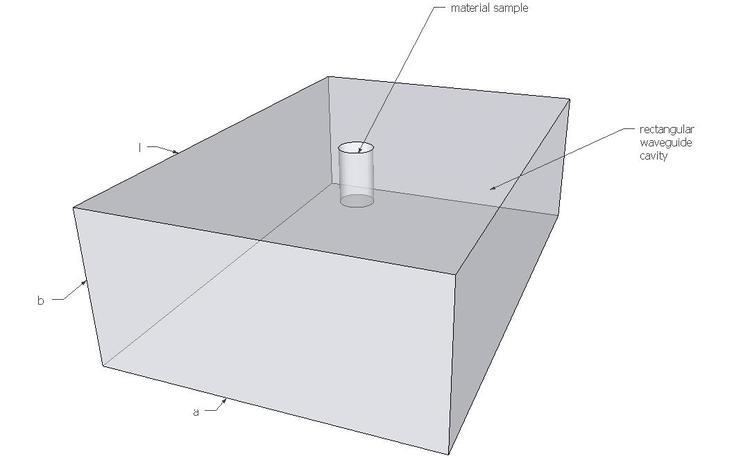 | ||
Cavity perturbation theory describes methods for derivation of perturbation formulae for performance changes of a cavity resonator. These performance changes are assumed to be caused by either introduction of a small foreign object into the cavity or a small deformation of its boundary.
Contents
General theory
When a resonant cavity is perturbed, i.e. when a foreign object with distinct material properties is introduced into the cavity or when a general shape of the cavity is changed, electromagnetic fields inside the cavity change accordingly. The underlying assumption of cavity perturbation theory is that electromagnetic fields inside the cavity after the change differ by a very small amount from the fields before the change. Then Maxwell's equations for original and perturbed cavities can be used to derive expressions for resulting resonant frequency shifts.
Cavity perturbation theory generally relies on formulae involving stored energy considerations. The following sections of this wikipedia pages are based on these formulae. The latter appear intuitive since the common sense dictates that the maximum change in resonant frequency is achieved when the small perturbation is placed at the intensity maximum of the cavity mode. This intuition is valid for high-Q cavities only and when predicting the spectral shift of the resonance frequency. However, the shift is always accompanied by a broadening of the resonance width, i.e. an increase of Q, and it is important to predict it also. The classical formulae based on energy considerations, i.e. on |E.E| products, cannot predict the broadening. For low-Q cavities, such as plasmonic resonators, they cannot predict neither the shift, nor the broadening. Correct formulae that are accurate for high- and low-Q resonators and for the shift and the brodening, have been established in 2015, see Nano Lett. 15 (5), pp 3439–3444 (2015). They are as simple, but use E.E products instead of |E.E| products. Importantly, the phase of the resonant mode is preserved in the new formulae.
Material perturbation
When a material within a cavity is changed (permittivity and/or permeability), a corresponding change in resonant frequency can be approximated as:
where
Expression (1) can be rewritten in terms of stored energies as:
where W is the total energy stored in the original cavity and
Shape perturbation
When a general shape of a resonant cavity is changed, a corresponding change in resonant frequency can be approximated as:
Expression (3) for change in resonant frequency can additionally be written in terms of time-average stored energies as:
where
This expression can also be written in terms of energy densities as:
Applications
Microwave measurement techniques based on cavity perturbation theory are generally used to determine the dielectric and magnetic parameters of materials and various circuit components such as dielectric resonators. Since ex-ante knowledge of the resonant frequency, resonant frequency shift and electromagnetic fields is necessary in order to extrapolate material properties, these measurement techniques generally make use of standard resonant cavities where resonant frequencies and electromagnetic fields are well known. Two examples of such standard resonant cavities are rectangular and circular waveguide cavities and coaxial cables resonators . Cavity perturbation measurement techniques for material characterization are used in many fields ranging from physics and material science to medicine and biology.
T E 10 n {displaystyle TE_{10n}} rectangular waveguide cavity
For rectangular waveguide cavity, field distribution of dominant
where
Once the complex permittivity of the material is known, we can easily calculate its effective conductivity
where f is the frequency of interest and
Similarly, if the material is introduced into the cavity at the position of maximum magnetic field, then the contribution of electric field to perturbed frequency shift is very small and can be ignored. In this case, we can use perturbation theory to derive expressions for complex material permeability
where
